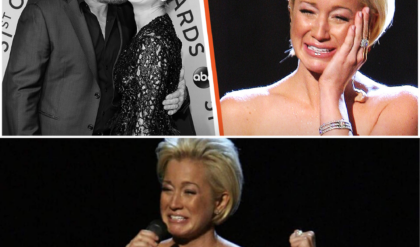Good news, bad news, character analysis, and spoilers from Cosmo Jarvis
At the end of a compelling, conspiratorial, and occasionally explosive season, Shōgun finished up with a muted finale. (Needless to say, major spoilers to follow if you are not fully caught up with the ten-episode series, available on Disney+.) It was that rare kind of closer: one that should satisfy viewers who have invested ten hours in an intricately-plotted show about a 17th century Japanese power struggle and also leave them with some room to think, a sadly under-appreciated art in television these days. As John Blackthorne (played by Cosmo Jarvis) dealt with the loss of his all-too-brief lover Lady Mariko (Anna Sawai), and Toranaga’s (Hiroyuki Sanada) master plan is finally revealed, viewers saw a final jigsaw piece slide elegantly into place.
In Chapter Ten, “A Dream of a Dream”, we catch up with Blackthorne, who is quieter than we have ever seen him: he has put down the swashbuckling, gruff persona and do some serious thinking. He is still making sense of Mariko’s death, asking Father Martin Alvito about religion (that it’s a civil conversation shows Blackthorn’s evolution since he first landed in Japan). Blackthorne also finds the Dutch ship on which he arrived has sunk. We learn that it was Toranaga who sunk the vessel and who has a final test for Blackthorne: he punishes the villagers, claiming that one of them burnt the ship, until Blackthorne offers to commit seppuku. Toranaga stops him, and orders him to rebuild the ship instead. In the last moments of the season, Blackthorne pulls the ship out of the water and begins that process. He seems like a changed man: collaborative, kind, a little softer (though equally sweary).
When I spoke to Jarvis earlier this year for an in-depth interview about the show, the 34-year-old British actor, who researched the role extensively, was unsurprisingly thoughtful about the ending: “Blackthorne did have an element of being egotistical: he wanted to be recognised, adored by the Queen and recognised for a fantastic achievement. All these are all quite selfish motivations.”
“I think that final moment in episode 10 is the first time you can be sure that he’s going something completely selflessly,” Jarvis explains. “And therefore, it brought about the question, How honest are his motivations and assertions that came before that? Were they at any point? I think that’s the core of him.”
Blackthorne is a fictional character from James Clavell’s bestselling book, Shōgun, first published in 1975. Clavell based him on British explorer William Adams, who, in 1600, became the first Englishman to reach Japanese shores. Adams remained in Japan – he was not allowed to leave – and became part of the real-life shogun dispute. It’s remarkable how much Shōgun does not feel like a history lesson – or rather, it is impressive how the writing team (headed up by Justin Marks and Rachel Kondo) make a history lesson so damn entertaining.
But the question on everyone’s lips will be: season 2? As Jarvis points out, the “narrative substance of the book is well and truly used up”. Clavell wrote five more novels in The Asian Saga (though they all take place in different time periods and countries. Shōgun was the third to be published, nonetheless taking place before the other five.)
Perhaps there is still hope. The real Adams did stay in Japan, though in the show, we see flash forwards – or are they post-explosion visions? – to an older version of his character back in England (which never happened). “[Adams] did some amazing things under Tokugawa, the Shogun that Toranaga is based on. He negotiated trading rights for two Dutch ships a year, which was something the Portuguese weren’t allowed. He became, in part, responsible for trade and has a pretty solid legacy in Japan,” Jarvis explains. There are, in fact, monuments dedicated to Adams: a memorial at his residence in Hemi, and towns and villages are named after him. So there is plenty of history to cover, just no more novel to adapt.
But departing Clavell’s books is a risk, in Jarvis’ eyes anyway. “It’s such a particular book and the intricacy that Clavell wrote it with is one of the only reasons why there was such a rich pool for this adaptation to dip into. He wrote in such depth about every single character and every single thing they were thinking of. Without a document to follow, I don’t know what that would look like.”
Still, with those viewing figures and the show’s critical acclaim, it’s hard to imagine Disney won’t want to proceed with a second season. In a television landscape crowded with new shows, Shōgun has cut through with the precision of a samurai sword. And we’d miss those opening credits.
‘Shōgun’ is available on Disney+





